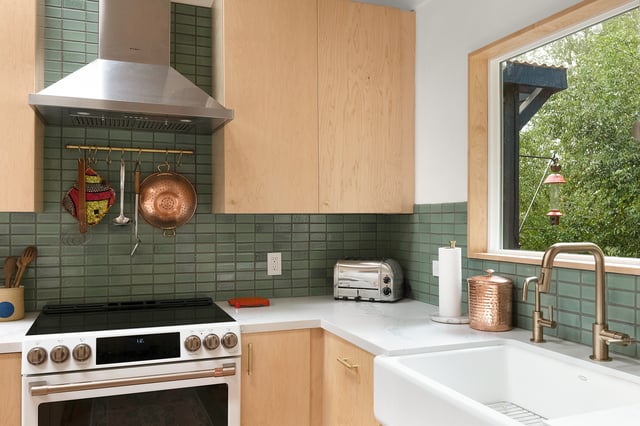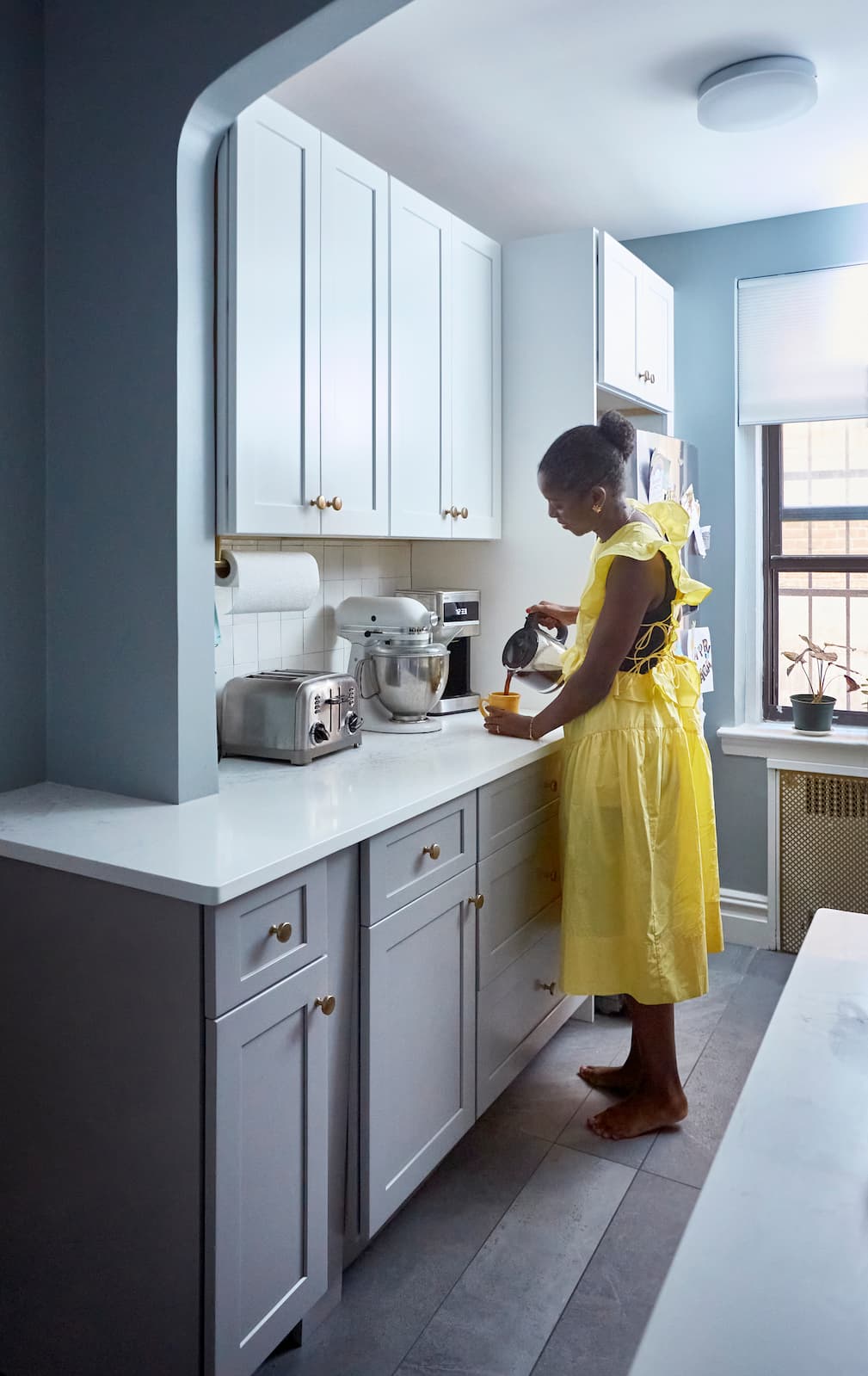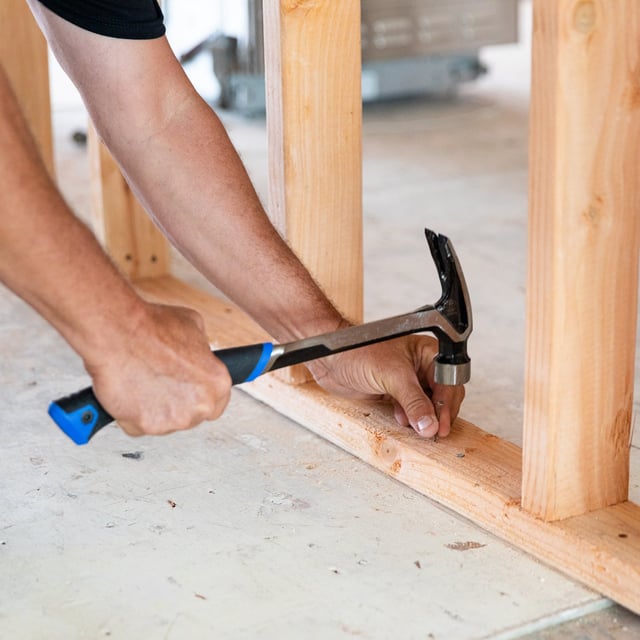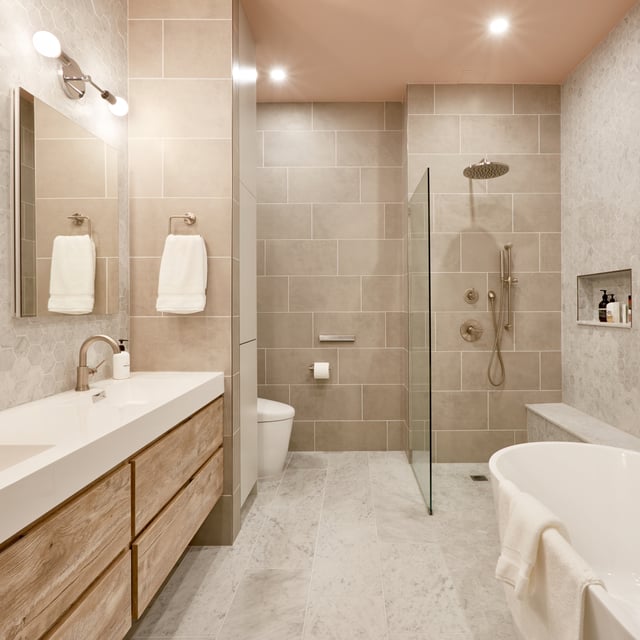
Cost
How Much Does a Bathroom Addition Cost?
09.26.2025

In This Article
Renovating your home is an exciting opportunity to create a space that truly reflects your style. But in today’s global economy, international tariffs and shifting supply chains can do more than disrupt timelines—they can drive up costs. According to CNN, new tariffs on key materials like cabinetry and tiles could significantly raise renovation expenses. With the right information, though, you can plan with confidence and take steps to keep your budget on track.
Design a Home That’s Uniquely Yours
Block can help you achieve your renovation goals and bring your dream remodel to life with price assurance and expert support.
Get Started
At their core, tariffs are taxes on imported goods. While they may sound like economic jargon, they have direct implications for your renovation budget. Everything from tile and lumber to appliances and light fixtures can be affected.
At its core, a tariff is a tax imposed by a government on goods imported into the country. While that may sound like a policy issue reserved for economists, tariffs directly affect the cost of many materials used in home renovations.
In the renovation world, tariffs are particularly relevant for essential building materials such as lumber, steel, copper wiring, ceramic tile, and appliances. If your design vision includes European fixtures or imported finishes, it is important to know that tariffs may influence both pricing and availability.
For instance, tariffs on Canadian lumber have contributed to price increases across the U.S. market, even for domestically sourced wood. Similarly, tariffs on Chinese imports have raised costs for appliances, lighting, and plumbing fixtures. Even when sourcing materials locally, homeowners can still feel the impact, as domestic suppliers often adjust prices in response to broader market shifts.
Understanding how tariffs work and where they apply helps you make more informed choices, plan ahead, and protect your renovation budget from unexpected fluctuations.
Tariffs don’t just raise prices—they reshape the entire supply chain, often in ways that affect renovation timelines and budgets. When tariffs drive up the cost of imported goods, suppliers and manufacturers may scale back production, seek alternative materials, or shift distribution strategies. The ripple effects are already being felt across the industry: according to Mansion Global, a Houzz survey from April found that over 90% of construction and design professionals expect business to contract in the second quarter, citing tariffs, high interest rates, and client delays as key concerns.
Material shortages: As imported products become more expensive, demand may shift to domestic options, straining local supply.
Shipping delays: Customs bottlenecks and compliance with new regulations can cause delays in material arrival, stalling your project.
Price volatility: Even materials sourced domestically can rise in price as demand spikes and availability tightens.
For homeowners, this means that even well-planned renovations can encounter sudden cost increases or scheduling disruptions. That’s why real-time pricing tools and contingency planning are essential parts of a modern renovation budget.
Turn your renovation vision into reality
Get matched with trusted contractors and start your renovation today!
Find a Contractor
Renovating in today’s market requires more than aesthetic decisions—it calls for thoughtful planning in the face of evolving prices and supply chain dynamics. This step-by-step guide is designed to help you stay in control of your budget, even as tariffs and material costs fluctuate behind the scenes.
Begin with a clear, detailed renovation plan. Rather than a broad goal (“refresh the kitchen”), break it down into specific tasks and phases. Are you replacing cabinetry, upgrading appliances, or reconfiguring the layout? Create a comprehensive material list including fixtures, finishes, and hardware. With tariffs in play, even small items can cause unexpected increases. The more detailed your list, the more accurate your cost estimates will be.
Block's renovation planner can help visualize your project and pricing in real time, so you can see how material choices impact your budget as you go.
Gather at least three bids from licensed professionals. This helps you compare not just pricing, but transparency and communication style—essential when market conditions are shifting.
Ask about:
A well-informed general contractor is your ally in navigating price volatility.
Your renovation budget should include a 15–25% contingency fund to account for potential increases related to tariffs or availability.
Identify which line items are most vulnerable to price fluctuations such as imported materials and flag them for closer monitoring. This way, if one component spikes in cost, you can shift resources without derailing the entire project.
Renovate with confidence every step of the way
Step 1: Personalize Your Renovation Plan
Step 2: Receive Quotes from Trusted Contractors
Step 3: Let Us Handle the Project Details

When tariffs or supply chain delays make certain materials expensive or hard to source, flexibility becomes your strongest asset. According to the National Association of Home Builders (NAHB), $204 billion worth of goods were used in constructing new multifamily and single-family homes in 2024, with $14 billion—about 7%—imported from outside the U.S. That means global trade policy directly affects a meaningful share of the materials used in American homebuilding. Exploring alternative materials doesn’t mean compromising on style; it’s about making smart, adaptable choices that keep your renovation moving forward without inflating your budget. If certain materials become too expensive or delayed, consider smart alternatives that balance quality, style, and cost.
Mixing these options can give you design flexibility while keeping your renovation on time and on budget. With visual planning tools and real-time cost updates, it’s easier to make confident, informed choices.
Timing plays a critical role in avoiding unnecessary costs and delays. Renovating during the off-season (typically in winter or early spring) can offer several advantages. Labor is often more available, contractors may have greater scheduling flexibility, and suppliers might offer seasonal discounts on materials.
In addition to seasonal timing, pay attention to potential trade policy changes. Tariffs can be proposed or adjusted with little notice, so keeping a basic awareness of upcoming legislation or industry updates can help you act decisively—whether that means ordering materials in advance or postponing certain phases.
Planning ahead gives you more than just peace of mind. It helps ensure your renovation stays on schedule and within budget, even when external factors shift.
Tariffs may be outside your control, but how you prepare for them is not. These proactive strategies will help you minimize budget risks and maintain momentum, no matter how the market moves.
One of the most effective ways to safeguard your renovation budget is to secure pricing in advance. Ask contractors and suppliers if they offer fixed-price contracts or guarantees on materials. Some may also allow you to pre-purchase high-impact items like tile, cabinetry, or fixtures, even if installation isn’t immediate.
This not only shields you from future price hikes but also helps avoid costly delays due to out-of-stock or backordered materials. Think of it as protecting your investment before market volatility can impact it.
A contractor’s sourcing relationships are just as important as their craftsmanship. Those who work regularly with trusted suppliers often have access to better pricing, priority inventory, and more flexible delivery timelines.
These relationships can be especially valuable when materials are in short supply or prices are fluctuating. During uncertain market conditions, a well-connected contractor can help you stay one step ahead.
Learn More: Everything You Need to Know About Hiring a Home Remodeling Contractor
You don’t need to track every global trade headline, but a basic understanding of the current landscape can empower you to make smarter decisions. Look to credible sources such as:
Even occasional check-ins can help you time purchases, choose substitutes, or restructure your renovation phases to avoid unexpected costs.
Even well-prepared homeowners can be caught off guard if they overlook key budget planning steps. Here are some of the most common mistakes—and how to avoid them:
Transparent Pricing You Can Trust

Tariffs and supply chain shifts are a reality of today’s renovation landscape, but they don’t have to derail your plans. With careful planning, flexible material choices, and access to accurate, real-time insights, you can navigate these challenges with confidence.
Our platform empowers you to:
Whether you’re remodeling a kitchen, upgrading a bathroom, or rethinking your entire home, we’re here to help you move forward with clarity—and build a space you’ll love.

Written by Block Renovation
How do tariffs specifically affect the cost of home renovation materials?
Can I avoid tariff-related price hikes by buying materials in advance?
What percentage of my renovation budget should I set aside for potential tariff increases?
Are there certain types of renovations less impacted by tariffs?
How can I find experienced contractors managing costs in a tariff-heavy market?

Renovate confidently with Block
Easily compare quotes from top quality contractors, and get peace of mind with warranty & price protections.
Thousands of homeowners have renovated with Block

4.5 Stars (100+)

4.7 Stars (100+)

4.5 Stars (75+)

Cost
How Much Does a Bathroom Addition Cost?
09.26.2025

Cost
Calculating the Cost of Your 12x24 Addition
09.18.2025

Cost
10x10 Bathroom Remodeling Costs
09.18.2025

Cost
The Average Cost of a Jacuzzi Bath Remodel—and How to Save
09.18.2025

Finance
With Lower Interest Rates, Is Now a Good Time to Renovate?
09.18.2025
Renovate confidently